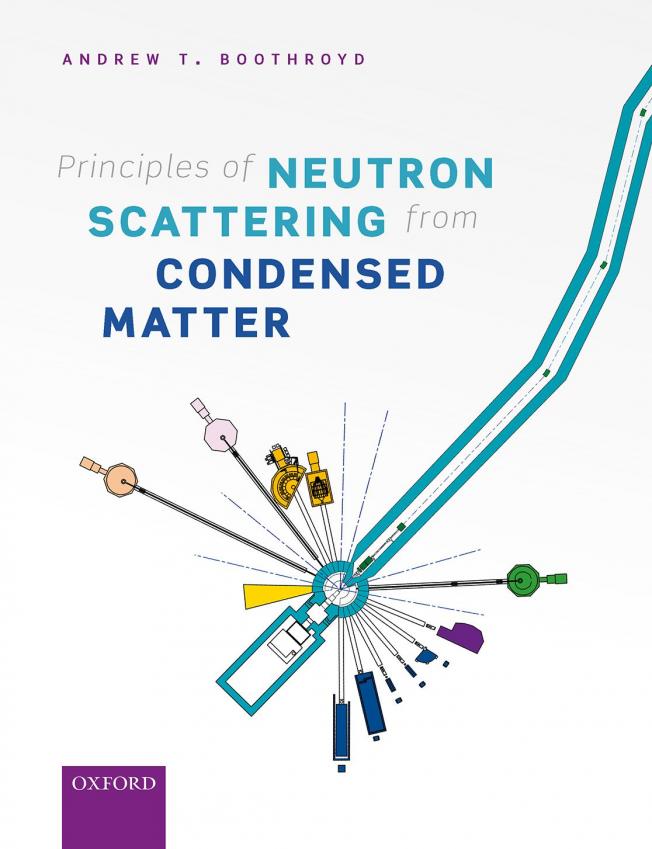Resonant soft X-ray diffraction - in extremis
J SYNCHROTRON RADIAT 12 (2005) 434-441
Abstract:
The use of softer-energy X-rays produced by synchrotron radiation for diffraction is an area of current interest. In this paper, experiments exploiting resonant scattering at the L absorption edges of 3d transition metal elements are reported. Such energies, typically 500 - 1000 eV, are at the extreme limit of soft X-ray diffraction where absorption effects are so severe that the sample and diffractometer must be placed in a windowless high-vacuum vessel. In addition, the Ewald sphere is so small as to likely contain, at most, only a single Bragg reflection. Advantages of using such radiation for the study of weak diffraction effects such as anomalous scattering, charge ordering, magnetic diffraction and orbital ordering are reported.Resonant soft x-ray scattering investigation of orbital and magnetic ordering in La0.5Sr1.5MnO4
Physical Review B - Condensed Matter and Materials Physics 71:24 (2005)
Abstract:
We report resonant x-ray scattering data of the orbital and magnetic ordering at low temperatures at the Mn L2,3 edges in La0.5Sr1.5MnO4. The orderings display complex energy features close to the Mn absorption edges. Systematic modeling with atomic multiplet crystal field calculations was used to extract meaningful information regarding the interplay of spin, orbital, and Jahn-Teller order. These calculations provide a good general agreement with the observed energy dependence of the scattered intensity for a dominant orbital ordering of the dx2-z2 dy2-z2 type. In addition, the origins of various spectral features are identified. The temperature dependence of the orbital and magnetic ordering was measured and suggests a strong interplay between the magnetic and orbital order parameters. © 2005 The American Physical Society.Observation of magnetic excitons in LaCoO3
Europhysics Letters 70:5 (2005) 677-683
Abstract:
An impurity-driven magnetic phase transition has been investigated in LaCoO3 at temperatures below that of the thermally induced spin state transition of the Co3+ ion. We have discovered a saturating component of the magnetisation, which we attribute to previously unobserved interactions between magnetic excitons. These conclusions are confirmed by muon spin spectroscopy which indicates an ordering temperature of 50 K in both the transverse and zero-field configurations. Low-energy muon measurements demonstrate that the magnetic behaviour is independent of implantation energy and hence a property of the bulk of the material. The magnetic exciton formation is attributed to the interaction between electrons bound at oxygen vacancies and neighbouring cobalt ions, and is proposed as the precursor to the magneto-electronic phase separation recently observed in doped lanthanum cobaltite. © EDP Sciences.Resonant soft X-ray scattering - a new probe of charge, spin and orbital ordering in the manganites
J MAGN MAGN MATER 290 (2005) 891-897
Abstract:
Soft X-ray resonant diffraction is a new technique pioneered by our group. We have published examples of the huge resonant enhancements of charge and magnetic scattering that can be obtained at the L-edges of 3d transition metal oxides. In this paper we will also show how resonant soft X-ray scattering enables direct observation of orbital ordering. We have studied the low temperature phase of La0.5Sr1.5MnO4 that displays charge, spin and orbital ordering. We have employed resonant soft X-ray scattering at the manganese L edges which provide a direct measurement of the orbital ordering. Energy scans at constant wavevector have been compared to theoretical predictions and show that at all temperatures there are two separate contributions to the observed scattering, direct Goodenough orbital ordering and strong cooperative Jahn-Teller distortions of the Mn3+ ions. Finally, we will show how that the spin and orbital degrees of freedom are strongly correlated in these materials. © 2004 Elsevier B.V. All rights reserved.Three-dimensional spin fluctuations in Na0.75CoO2
Physical Review Letters 94 (2005) article 157206 4pp


